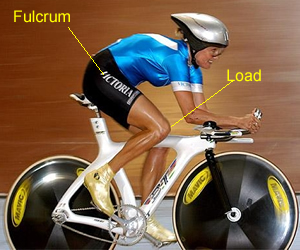Human body levers exercises.
The forearm is controlled by the biceps and triceps.
What muscle is responsible for straightening the forearm?
What muscle is responsible for bending the forearm?
What type of lever is formed when the triceps contract?
What type of lever is formed when the biceps contract?

An athlete performs leg extension exercises as shown on the right. What type of lever is formed?
What muscles move the lower leg?
Identify the position of the fulcrum, effort and load.
Is this lever a force multiplier or distance multiplier?
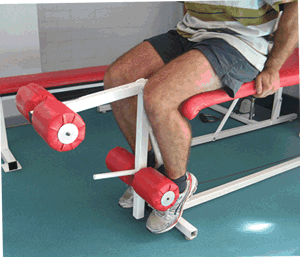
The jaw is a very powerful lever.
Investigate the muscles that move the lower jaw. Identify where they attach to the jaw and therefore label the fulcrum, effort and load. Assume that the person is crushing a very hard nut with their back molars.
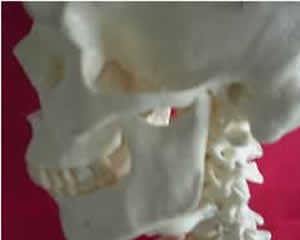
An athlete stands on their toes. The ankle joint is shown on the right.
Identify the fulcrum, effort and load.
What type of lever is formed?
Is the load closer or further from the fulcrum than the effort?
Is this a force multiplier or distance multiplier? Explain.

Investigate the kicking action of a soccer player.
Identify the bones that are involved in the kick.
What muscles move these bones?
What type of levers are formed by the muscle and bone attachments?
Are they force multipliers or distance multipliers?
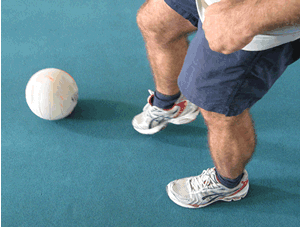
Consider the picture of a bike rider's skeleton.
What leg bones are rotating when the rider is peddling while seated?
What muscles cause the movement of these bones or bone?
Identify the load, fulcrum and effort.
What advantage or disadvantage would a cyclist with a longer than normal femur have over other cyclists?
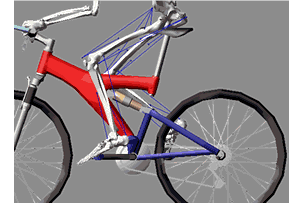
Investigate the action of an Olympic shot putter.
Why does the athlete bend backwards just before releasing the shot?
What type of lever is formed by the upper torso?
Identify as many levers acting as possible. Label each lever as first, second and third order.
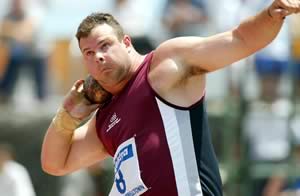
Is a long thigh bone (femur) more advantageous to a cyclist than a short one? Explain.
You may first need to identify the muscles used to push the thigh downwards.
